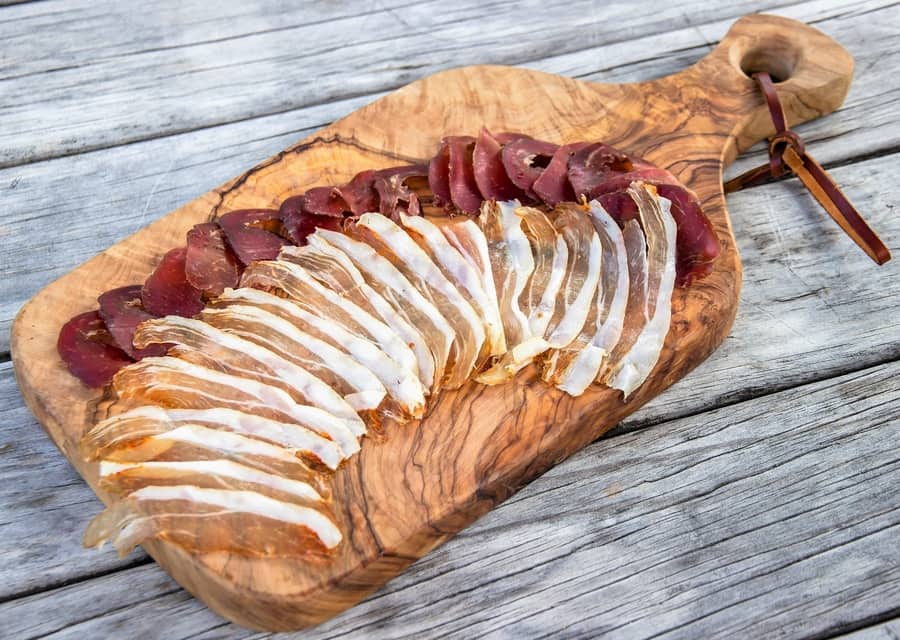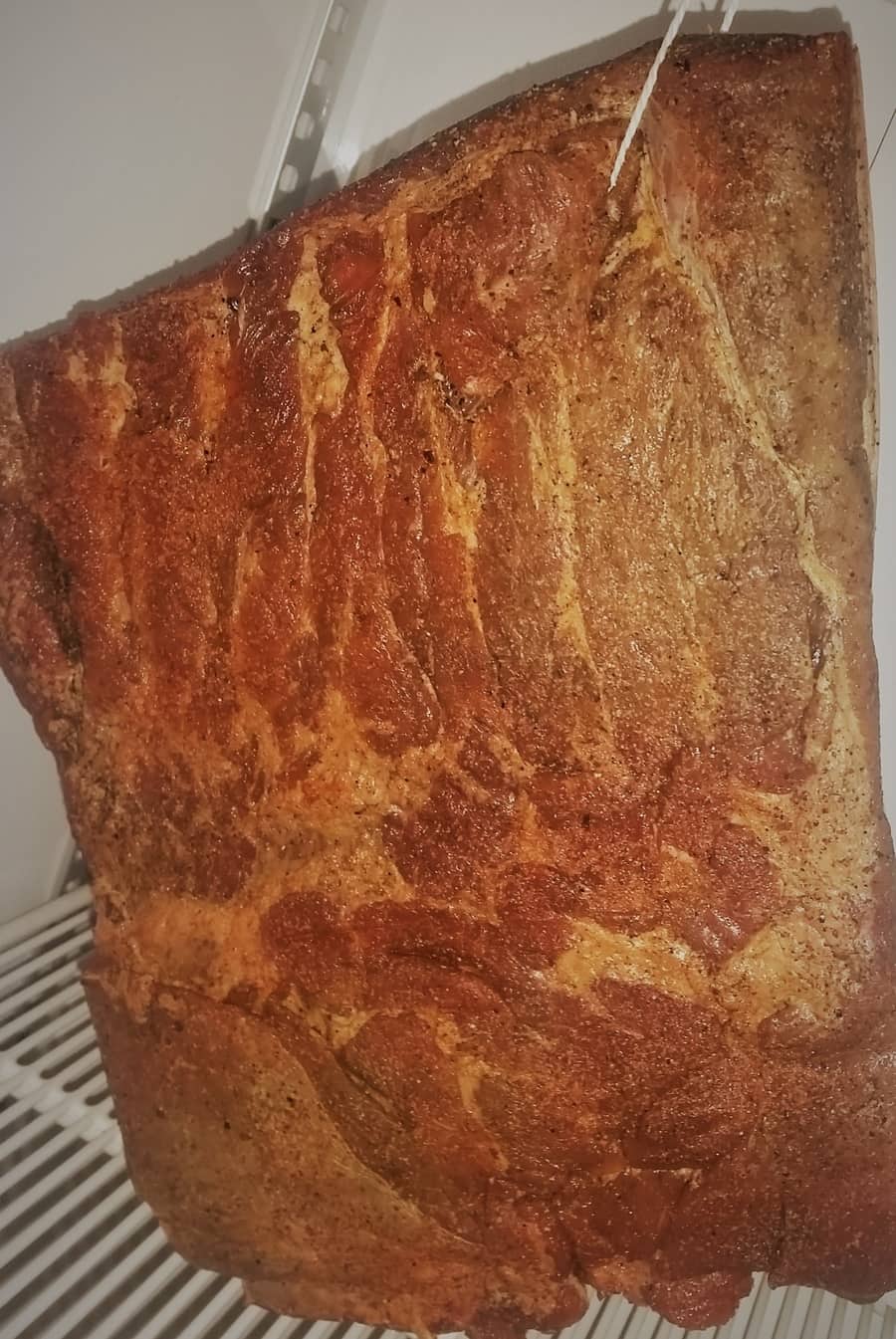When I started hot-smoking meat, I did wonder if it had any preserving aspect to it.
After exploring all aspects of cold smoking and hot smoking for many years, I’ve been teaching people about cold smoking both online and offline.
It seems a lot of people assume that smoking is preserving. However, there is a difference between preserving and smoking.
Does Hot Smoking Preserve Meat
No, hot-smoking meat is the process of cooking meat with an element of smoke to enhance flavor. Preserving meat involves slowing anti-microbial activity through drying, salt, acidity, or cold smoke.
It’s a combination of factors that allow meat to be preserved through smoking.
The salt curing & the long cold smoking time are the main factors. Which dries the meat out, the smoke has quite a few ‘preserving’ properties that help with this.

However, there are other techniques for preserving meat, too. My focus is on preserving good flavor, that is what I pursue. Also, some Artisan styling was thrown in for good measure.
Hot Smoking Meat – How Long Will It Last?
Therefore, when you hot smoke (hot smoking technique in detail), you are doing the equivalent of cooking meat, so you are looking at lasting about one week. If you vacuum pack you can increase the shelf life. So all the pit master BBQ styles are a form of hot smoking (here is a link to the hot smoking category list on this site) or slow & low.
Hot Smoking Process
- Dry salt curing or salt brining the meat
- Drying meat to form a pellicle
- Hot smoking the meat
- Eat the Meat
If you want, check out Pellicle and why it’s awesome – it’s here
If you haven’t tried hot smoking, here is a super easy guide below.
Also, here is a hot smoking fish guide, or how to hot smoke on a gas BBQ Guide.
Ways of Preserving Meat
A summary of ways to preserve meat for a short time or longer.
- Oil Bath – Oxygen Removal
- Fat or Lard Preservation
- Dry/Wet Curing Meat
- Dehydrating
- Cold Smoking
The Oil Bath – Oxygen Removal
When I worked for a year in Scotland, one of the businesses was a fine-dining celebrity restaurant. The family also owned half a mountain with wild venison (red deer) running around, handy for the kitchen.
One of the chefs was putting away some 40-day aged venison for the 5-course dinner (the menu changed every day). It was a fantastic place, though this was quite a few years back now. So I don’t know what it’s like now.
Mr. Chef was bathing the venison steaks in cold-pressed olive oil with rosemary and juniper. He said this meant no air or oxygen could reach them, and they could use the venison over the next few weeks. Here is a link to the technique.
COMBAT OXYGEN
Oxygen causes a decline in quality when foods are stored for longer periods in the refrigerator or freezer. A marinade or a thin layer of olive oil protects the meat so that it keeps a little longer. Any layer of fat also protects the meat.
Fat and Lard preservation also utilizes this technique of depriving the meat of oxygen.
Fat or Lard Preservation – Duck Confit or Rillette
Duck hunting season is something I got excited about since I was about 8 years old. Wild duck and farmed duck work well, this is pure and cooked in fat (duck or goose), then packed into sterilized jars.
If not opened they will last months possibly years in the cupboard. Once open, we would generally consume it within a month. Fat, thyme & garlic are the main ingredients.
The classic French dish works very well with bought, farmed, or wild duck.
My friend was pretty proud of this recipe, so he distributed jars and printed recipes as a gift to a select lucky group, including myself.
Dry/Wet Cured Meat
This is both a short-term and a long-term option.
So in terms of the long term, once you have salted the meat appropriately, you need to dry it to a minimum of 30% weight loss. This is where the curing chamber or consistent temp and humidity helps.

The main reasons for the curing chamber (how to setup a DIY curing chamber guide I wrote) are:
- Protection of the meat from bugs
- You develop a ‘good bacteria’ environment, penicillin (the fine white powder you see on salami and salumi).
- Controlling temperature & humidity
- Having some good fresh air flow to help gently dry
Dehydrating

Dehydrating is drying. In a survival context, it can be done on an open fire if enough distance is made from the meat, airflow is allowed, and the meat is thinly cut.
A preferred method is also using the power of salt (curing) and also acidity.
Using acidity, salt, and drying/dehydrating.
Some Jerky or Biltong is hot or cold smoked to impart flavor. Either using a cardboard box method, biltong box, dehydrator, or curing chamber, anyone can make biltong/jerky.
The initial process of drying the meat preserves it for a few days to a few weeks. However, it tends to dry out more and more due to exposure to oxygen.
The traditional addictive South African biltong is a bath of salt, vinegar, and (toasted coriander); vinegar is ‘pickling,’ technically cooking with acidity, with a flavor and preserving effect.
However, it seems when making biltong it is ‘cooking it’ to a degree…
It coagulates protein. Vinegar breaks the chemical bonds that hold protein strings in a twist, causing the proteins to denature or unravel and “tenderize.” This commonly occurs when meat is marinated in a vinegar-based marinade. With continued exposure to acid, the unraveled protein strings eventually bump into each other and form new bonds. The popular South American raw dish ceviche is based on acid’s ability to denature and coagulate protein without heat: sliced raw fish is “cooked” in acidic ingredients until opaque and firm, but without the flavor changes that would occur if the fish were exposed to high temperatures.
So, preserving for flavor is where I wanted to head. If you have any thoughts, I would love to hear from you.
Preserving Meat by Smoking – Cold Smoking
An extension of dry/wet curing, cold smoking (more I wrote on smoking and how it preserves here) is more about using smoke to protect and flavor the food.

Under 70°F or 30°C, you are cold smoking meat or food. But it is over a long period of time. First, the meat has to be properly dry or wet cured (here is an article on curing for hot smoking in detail), primarily with salt.
Because cold smoking (cold smoking or charcuterie flavors; I wrote about how they taste) is over a long period, the smoke penetrates through the meat.
The pellicle is a protein-binding site when the meat is dried out after the salting/brining phase. Here is a post on pellicles.
One, two, or multi-days—the traditional cold smoking process is an extended period of time during which the smoker maintains a low temperature and humidity that shouldn’t be too high.
During the curing process, the salt draws moisture out; this means the bacteria that breaks down/spoils has a hard time and can’t thrive in this low-moisture environment. This is truly an ancient craft that can be traced back thousands of years.
Smoking has a long tradition in food cooking and preservation. Cold and hot smoking have different aims and effects on the quality and safety of foods. Cold smoking is mainly used for flavor and to extend shelf-life due to the antioxidant and antimicrobial effects of smoke compounds.
Smokehouse temperatures for cold smoking are typically between 20 to 30 °C (68 – 86 °F). In this temperature range, foods have a smoky flavor but remain relatively moist. Cold smoking does not cook foods, and as such, meats should be fully cured before cold smoking.
From, https://en.wikipedia.org/wiki/Smoking_(cooking)
This is mostly correction, however.
In a survival content, meat can be sliced thinly and dried on an open fire, therefore drying can be done without salt curing.
Smoking has an antifungal and antimicrobial effect, in addition to the salt. It also tastes awesome, especially if you are making your own!

Tom Mueller
For decades, immersed in studying, working, learning, and teaching the craft of meat curing, sharing the passion and showcasing the world of charcuterie and smoked meat. Read More
